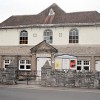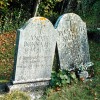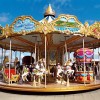The Milton Abbas Street Fair is a huge event that takes place every two years along the famous and much photographed village street and the next fair will be held on July 27th 2013. Always well attended the event is as authentic an eighteenth century fair as the organisers can make it. Bunting is hung up and down and across the street; residents and stall holders dress in period costume and visitors are encouraged to join in.
But there is a lot more to see and learn about the parish of Milton Abbas to provide even the most experienced tourist with an interest-packed day: the Abbey Church and St Catherine’s Chapel, not to mention the village street with its uniform housing, almshouses and St. James’ Church all in a beautiful setting.
The original church was founded by King Athelstan of Wessex in 933 AD, to commemorate the death of his brother Edwin who died at sea. In 964 King Edgar turned-out the priests and replaced them with Benedictine monks from Glastonbury. Around the monastery a thriving town grew to over 100 houses and several taverns but it was demolished and replaced by the model village we see today.
Middleton as it was known until 1753 was a prosperous market town sitting in the valley between the present day Milton Abbas and the Abbey. What became of Middleton? Joseph Damer, later to become Lord Milton, the first Earl of Dorchester, tore down the old abbey buildings and built himself a mansion in the Gothic style next to the Abbey Church calling on the services of Lancelot ‘Capability’ Brown the leading landscape designer and gardener of the day to improve his view.
Brown had a reputation for not letting anything stand in the way of the successful execution of his plans and elsewhere had moved whole communities to ensure that his grand designs were fully realised. Middleton was no exception; it was in the way so it had to go.
In 1780 Joseph Damer built Milton Abbas to house the residents of Middleton. The new village was built over the hill where it would not spoil his view. When the last resident at Middleton, a lawyer, refused to be evicted Damer opened the sluice gates to the new dam and flooded him out. That last man later had his day in court with Damer – and won.
Milton Abbas is considered to be the first planned town or village in Britain. After visiting the village in 1791 Frances “Fanny” Burney (1752-1840) a leading woman author and contemporary of Mary Wollstonecraft noted in her diary that she admired the new village “built by his Lordship, very regularly of white plaster, cut stone fashion and thatched” but she thought the houses too good for “the Poor.”
The village is about half-a-mile south east of the original town and comprises two rows of cottages all set out on either side of a broad and gently winding road. The cottages are two-storied and have cob walls and thatched roofs. Originally each cottage would have comprised two homes but most are now single dwellings and all benefit from a generous area of lawn at the front. On one side and mid way down the street are the almshouses and the parish church of St. James.
After the dissolution of the monastery in 1539 it was sold the following year to Sir John Tregonwell for £1,000. He made the abbey church into the parish church and used the abbots lodging as his own private residence. The estate was bought by Joseph Damer in 1752 and he employed John Vardy to build a new mansion next to the Abbey Church. Following Vardy’s death in 1765 Sir William Chambers was commissioned but he resigned in 1774 after frequent arguments with “this unmannerly imperious lord.” The project was taken over by James Wyatt.
The Abbey Church of St. Mary, St. Sampson and St. Branwalader is the largest mediaeval building in central Dorset and commands a spectacular landscape in a deep valley surrounded by wooded hills. Comprising a chancel, tower and transepts; the nave was never built and the chapels have been demolished. If completed as originally intended it would be a huge structure. What we see here is of the 14th and 15th centuries and much of the work was undertaken by Abbot William Middleton; the original buildings were destroyed by fire in 1309 after lightning struck the spire.
Joseph Damer married Caroline Sackville, daughter of the first Duke of Dorset. After her death the Italian sculptor, Carlini, was commissioned to make a monument to her and this stands in the north transept of the Abbey.
The Chapel of St. Catherine is set on a hill overlooking the Abbey Church, about 300 yards from it, and stands on the lowest of a series of artificial terraces inside its own enclosure. It comprises a nave and chancel both of the late 12th century and benefits from restoration work carried out in the late 15th or early 16th century when some of the windows were enlarged. Further works were carried out in the 18th century. The chapel was converted to secular use during the 19th century but restored as a place of worship in 1901.
There is a story concerning the son of Sir John Tregonwell who at the age of 5 is said to have fallen 60 feet from the top of the church tower. Apparently he was dressed in the style of the day and his petticoats acted like a parachute and he touched down none the worse for the fall and went on to live for another 77 years. An unlikely tale and one that is repeated in some impeccable sources.
Milton Abbas is about eight miles to the south west of Blandford, between the villages of Milbourne St. Andrew and Hilton, in the heart of Dorset.



